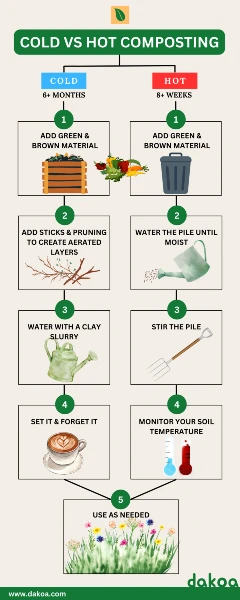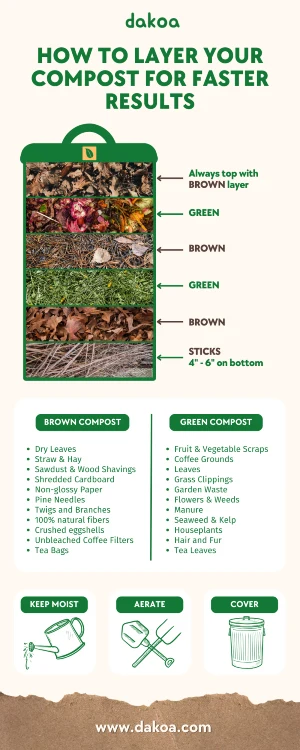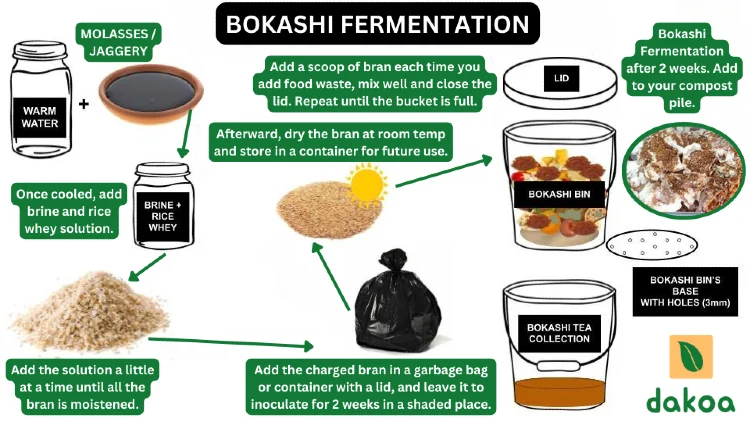In a world grappling with the enormity of food waste, finding innovative and sustainable ways to manage organic materials has never been more critical. Enter the humble practice of composting – a natural alchemy that transforms food scraps and yard waste into a nutrient-rich soil amendment, crucial for fostering healthy plant growth. Among the myriad of items you can compost, there’s one question that often puzzles eco-conscious minds: Can you compost yogurt?
Yogurt, a dairy staple enjoyed by many, isn’t just a nutritious snack but also a valuable addition to your compost heap. Despite being an animal product, it’s packed with organic matter that can benefit your compost in small quantities. This guide embarks on a journey to demystify the composting process involving yogurt, showcasing it as a great way to enhance your soil fertility and contribute to a sustainable lifestyle.
By understanding how to incorporate yogurt into your compost correctly, you’ll discover an effective way to recycle dairy products into natural fertilizer, turning a potential waste into a boon for your garden. Let’s delve into the world of composting to uncover how your leftover yogurt can play a pivotal role in enriching the organic waste in your home compost bins, promoting a healthier planet and vibrant gardens.
Why Yogurt? Unleashing the Probiotic Power in Your Compost
Ever glanced at your yogurt and thought, “You’re going to make my tomatoes grow wild next season”? No? Well, maybe it’s time to start. Beyond its prowess in making our breakfasts more bearable and our smoothies creamier, yogurt harbors a secret life as a composting superhero. This dairy product isn’t just food for us, but a feast for the beneficial bacteria working tirelessly in our compost piles.
A Nutrient Dynamo
Imagine your compost heap as a garden party where brown materials like leaves and twigs are the introverts, and green materials—your food scraps and grass clippings—are the social butterflies. Yogurt, with its rich organic matter, walks in like a charismatic guest, blending the best of both worlds. It brings nitrogen to the mix, acting as a catalyst that helps break down those shy brown materials faster. But, unlike that one guest who overstays their welcome, small amounts of yogurt keep the composting process smooth without leading to any unpleasant odors or attracting unwanted pests.
Microbes Will Do Their Thing
Yogurt is loaded with healthy bacteria, including those famous for their role in the decomposition of organic material. When added to a compost bin, these microorganisms don’t just sit idle; they throw their own microscopic party, speeding up the decomposition process and transforming your pile into nutrient-rich fertilizer. Think of it as adding a pinch of magic dust to your compost, except this magic comes in the form of lactic acid bacteria from the yogurt.
A Balancing Act
Remember, though, even the life of the composting party needs to be managed. Yogurt should be introduced to your compost pile with a bit of finesse. Mixing it with ample brown materials ensures your compost maintains the perfect moisture level and carbon-to-nitrogen ratio. It’s like making sure there’s enough chips and dip for everyone at the party—balance is key.
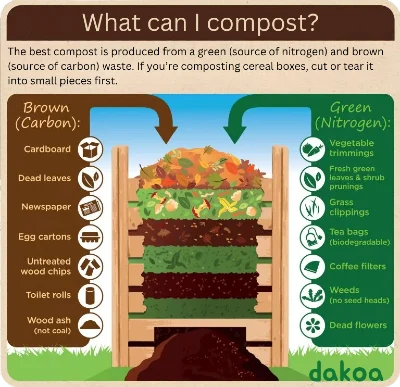
The Dairy That’s The Exception
While the thought of composting dairy products might raise a few eyebrows (or noses), consider yogurt the exception rather than the rule. Unlike its cousins ice cream and sour cream, plain, unsweetened yogurt doesn’t bring sugar or large amounts of fat to your compost. Instead, it arrives, cape fluttering, ready to enrich your soil without much drama.
The Art of Composting Yogurt: A Step-by-Step Guide to Soil Superpowers
So, you’ve decided to invite yogurt to your compost’s microbe rave. Excellent choice! But, as with any good party, there’s an art to ensuring everyone—bacteria included—has a good time without turning your backyard into the aftermath of a dubious festival. Here’s how to compost yogurt without causing a stink (literally).
Step 1: The Incognito Approach & The Perfect Mix
Before you toss that cup of yogurt into the compost pile, pause. Remember, good composting is like baking a cake; it’s all about the right proportions. For every dollop of yogurt, add a generous helping of brown materials. These carbon-rich friends, like dried leaves, paper products, or dry fibrous materials, will help balance the moisture the yogurt adds and keep your pile fluffy and aerated. It’s like inviting both introverts and extroverts to the party to ensure lively yet balanced conversations.
Positioning Is Critical! When you add that yogurt to your compost bin, you can’t just plop it on top like a cherry on a sundae. No, you must sneak it in. Bury that yogurt deep in the center of your pile, like a treasure waiting to be discovered by your compost’s eager microorganisms. This center of the compost pile tactic keeps unwanted pests at bay and ensures the yogurt integrates smoothly into the decomposition process.
Step 2: Mix It Like a Master Chef
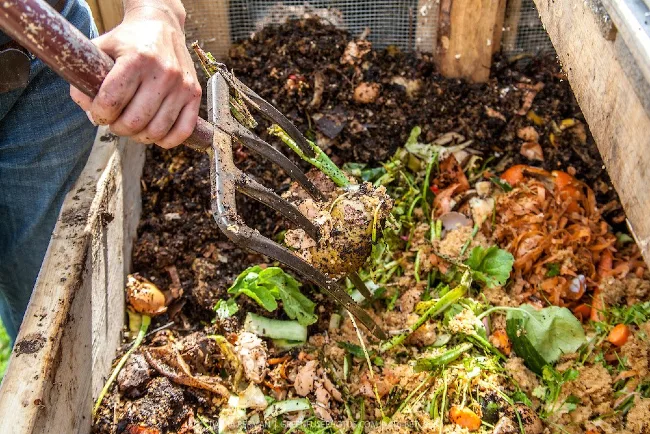
Remember, your compost heap isn’t a picky eater but does appreciate a well-balanced diet. After adding yogurt, give the pile a good mix. This isn’t just a stir; it’s an epic blending that ensures your yogurt mingles well with brown materials (like those dry fibrous materials) and green materials (hello, vegetable scraps and coffee grounds). Think of it as creating the perfect compost cocktail, one that’s sure to be a hit with the microbial crowd.
Step 3: Keep It Cool (or Hot)
Whether you’re a fan of cold composting or hot composting, yogurt can adapt. However, hot composting is like the VIP section, where the high temperatures help break down the yogurt faster and more efficiently, minimizing any odor problems and speeding up the journey to finished compost. Maintaining a compost pile at high temperatures accelerates the breakdown of organic matter, including those tricky animal products.
So, if you can, aim for the hotter side of composting. This will help breakdown all the materials into beneficial composting organisms at record speed, and you’ll get usable, nutrient-rich compost much faster.
Step 4: Practice Moderation
We’ve all been told, “Everything in moderation,” and this wisdom extends to composting yogurt. Adding small amounts of yogurt is the key to maintaining a healthy, balanced compost. Overloading your compost with dairy can lead to unpleasant odors, health risks, and a fertile breeding ground for not-so-beneficial bacteria. So, keep it classy and moderate; your compost (and neighbors) will thank you.
Step 5: Monitor and Adapt
The world of composting is dynamic, and what works today might need tweaking tomorrow. Keep an eye on your compost pile after adding yogurt. If you notice any foul odors or signs of unwanted pests, it’s time to reassess and perhaps add more brown materials to soak up excess moisture and restore balance. Composting is a bit like gardening itself—a labor of love that requires patience and a willingness to learn and adapt.
Step 6: Patience Pays Off
Good things come to those who wait, and compost is no exception. Giving your compost materials time to fully break down is crucial, especially when you’ve added yogurt and particularly if you’ve chosen to use the cold, slower composting method. Once your compost achieves a dark, crumbly texture and smells earthy, it’s ready to enrich your garden. The wait might be a long time, but the result is a natural fertilizer that’s pure gold for your plants.
Dos & Don’ts: Troubleshooting and Triumphs
Now that you’re practically a yogurt-composting guru, let’s iron out those final wrinkles. Composting, much like baking or gardening, sometimes throws us a curveball. Here are solutions to common yogurt-related compost challenges, ensuring your compost remains a thriving, odor-free zone.
The Odor Issue: When Your Compost Smells More Like a Trash Can than a Garden
Let’s face it: unpleasant odors can turn an inspiring compost project into a grim chore. If your compost starts to smell more like a forgotten garbage disposal rather than a fertile foundation for future plants, don’t panic. This is often a sign of too much moisture or not enough air. Counteract this by turning your pile more frequently to introduce oxygen and adding more brown materials to soak up excess moisture. Remember, a healthy compost should smell earthy, not sour.
The Pest Party: Uninvited Guests in Your Compost
While you want your compost to be a microbial rave, you don’t want to host a buffet for rodents or flies. Unwanted pests are usually attracted by exposed food waste or too much dairy. If pests become a problem, ensure your yogurt and other attractants are well buried in the center of the compost pile. Consider a compost bin with a lid or a tumbler to keep critters out. Maintaining the right balance between green and brown materials also helps prevent the pest party from starting in the first place.
The Slow Dance: When Decomposition Takes Forever
Patience is a virtue, especially in composting. If your compost seems to be taking a long time to break down, it might need more green materials (nitrogen) to speed up the decomposition process. Adding a bit more yogurt or other nitrogen-rich food scraps can give it the boost it needs. Also, ensure you’re turning your pile regularly to distribute heat and microbes evenly. Sometimes, all your compost needs is a little nudge to get back on track.
Dairy Dilemmas: How Much Yogurt Is Too Much?
There’s such a thing as too much of a good thing, even when it comes to yogurt in compost. Introducing large amounts of dairy products can upset the delicate balance, leading to odor problems and a slower decomposition process. Stick to small quantities and mix it well with brown materials and other compost materials. Observing how your compost reacts over time is the best way to gauge how much dairy it can handle.
Yogurt Type Matters: Plain, Unsweetened Is Best
Lastly, not all yogurts are created equal in the eyes of composting. Flavored or sweetened yogurts can attract more pests and may contain additives that aren’t beneficial for your compost or garden. Stick to plain yogurt to keep your compost healthy and your plants happy.
Armed with these troubleshooting tips, you’re more than ready to integrate yogurt into your composting routine with confidence. But before we call this article a complete success (and a complete guide to composting yogurt), let’s deal with the most common questions people often have on this subject.
Frequently Asked Questions About Composting Yogurt
Composting can seem like alchemy at times, turning everyday leftovers into garden gold. As you embark on this natural process, questions arise, especially when it comes to composting unique materials like yogurt. Let’s tackle some of those head-on.
Can I add tea bags and citrus fruit scraps along with yogurt to my compost?
Absolutely! Tea bags are a great addition to your compost heap, adding nitrogen and tannins, which can benefit your compost’s balance. However, ensure the bags are biodegradable to avoid leaving plastic residues in your soil. Citrus fruit scraps can also be composted but in limited quantities. While they’re rich in nutrients, their high acidity can slow down the decomposition process if overused.
Is there a health risk in composting dairy products like yogurt and cottage cheese?
Composting dairy products like yogurt and cottage cheese generally poses no significant health risk if managed correctly. It’s essential to bury these items deep within your home compost pile to avoid attracting pests and to ensure they break down effectively. Remember, a well-maintained compost minimizes health risks and promotes healthy soils.
How do bokashi bins work with dairy products?
Bokashi composting offers a different way to compost dairy products, including yogurt. This method uses effective microbes to ferment the waste in a sealed container, reducing odor production and breaking down the high fat content found in dairy. It’s an easy way to handle animal products that might not decompose as readily in a traditional compost setup.
What are some best practices for maintaining moisture content in my compost?
Maintaining the right moisture content is crucial for a healthy composting process. Your compost should feel like a wrung-out sponge. If it’s too dry, add green materials like fruit scraps or a bit of water. Too wet? Mix in more brown materials like shredded paper products or straw to absorb excess moisture. This balance helps create good quality compost while reducing the chance of foul odors.
Can I compost animal gut, meat scraps, or cat feces?
It’s best to avoid composting any meat, or animal byproducts, in a standard home compost bin. They’re simply not worth the risk; these materials can introduce harmful pathogens and attract pests. Of course, there’s always the bokashi composting method that can handle these types of waste. It’s a specialized composting method that’s safer and more effective, and you can read more about it here. Cat and dog feces should never be added to your compost bin, as they contain bacteria and potential pathogens that can be harmful to humans and could be introduced into fruits and vegetables when used in the garden. Instead, try using a DoggyDooley digester or similar product that breaks down the fecal material using enzymes.
How can composting reduce the amount of waste and use less water?
Composting is a powerful way to reduce the amount of waste going to landfills, where organic matter often decomposes anaerobically, producing methane, a potent greenhouse gas. By composting, you’re converting waste into valuable soil amendment, reducing the need for chemical fertilizers. Additionally, good quality compost can improve soil structure, helping it retain less water and reducing the need for frequent watering, which is excellent news for soil health and conservation.
What makes compost a good source of nitrogen for school gardens?
Compost, especially when enriched with materials like yogurt, becomes a good source of nitrogen, a critical nutrient for plant growth. Using compost in school gardens not only enhances plant health and yield but also serves as an educational tool, teaching students about sustainability and the importance of recycling organic materials.
Are there any materials that shouldn’t be placed in a composting bin?
Yes, while composting is a versatile way to recycle organic waste, certain materials should be avoided. These include plastic bags, meat scraps (unless using a bokashi bin), diseased plant materials, and invasive weed seeds, as they can introduce human diseases, pests, or fungal diseases into your compost. Sticking to plant-based scraps, coffee grounds, eggshells, and vegetable scraps is generally a safe and effective way to maintain a healthy compost pile. And yes, there’s even a way to compost cereal boxes!
More To Discover
- Tips On Dealing with Slugs and Snails in Your Garden Without Pesticides or Chemicals
- What Is Cotton Burr Compost? Benefits for Gardens
- Some US Politicians Are Preaching Against It But The People Have Spoken: Sustainability Isn’t Just a Trend, It’s Becoming a Lifestyle
- France Just Made Composting Mandatory And It’s Expected To Make A Big Difference
Conclusion
With these FAQs addressed, you’re well-equipped to navigate the enriching world of composting, turning yogurt and other compostables into nutrient-rich fertilizer for your garden. Remember, composting isn’t just about reducing waste; it’s about creating a cycle of growth and sustainability that nurtures your garden, supports human health, and contributes to a healthier planet.
In truth, composting is as much an art as it is a science—requiring observation, adaptation, and a bit of creativity along with a touch of patience. By composting yogurt, not only are you reducing food waste and enriching your soil, but you’re also taking an active step towards a more sustainable lifestyle. Here’s to your composting success, may your gardens thrive and your compost bins be odor-free and productive!









